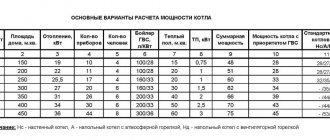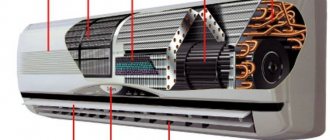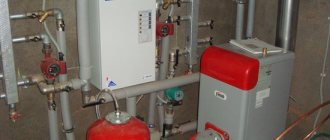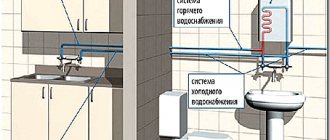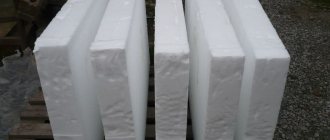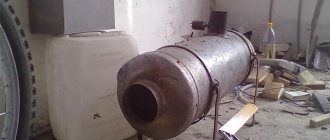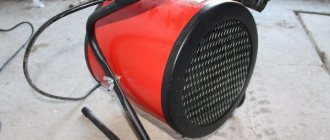Thermal equipment
- This is a wide range of products that are designed for heating rooms, which is its main feature. The quality of thermal equipment is a fundamental difference between the products we offer. As thermal equipment, we offer heat generators, heating units, air heaters, heat guns, heat curtains, infrared heaters.
All these heaters are fueled with different types of fuel, have varying degrees of engine power and heat flow. When choosing equipment for heating rooms, we all compare several factors: price, quality, service. Before purchasing heating equipment, you need to know what type of fuel it runs on and how it burns.
more details
Sonniger Heater models
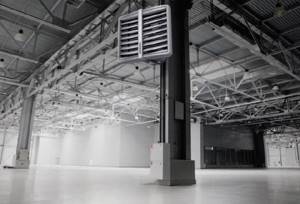
A relatively new line of fan heaters on the domestic market, the representatives of which are characterized by high power, stylish design and modern functionality. By the way, the manufacturer himself gives a lifetime warranty on the case. The Heater R1 model has already gained the most popularity. This is a basic installation that has a universal combination of operating qualities, which, however, are more suitable for domestic use. It is enough to note power indicators in the range of 10-30 kW, 10 kg of total mass and productivity at 2500 m3/h. At the same time, users of water fan heaters point to the ergonomic ARW 1.5E rotation speed controller, which is complemented by a RAA21 thermostat. In combination, these installation controls allow you to fine-tune the operating parameters of the equipment, saving energy.
Principle of operation
The water fan heater is constructed of a housing, inside of which there is a heat exchanger and a fan.
Using blades, the fan generates an air flow that is heated by a heat exchanger with circulating hot water and thus increases the air temperature in the room. This device is highly efficient with fairly low power consumption. In addition, the water fan heater is easy to maintain, and the only part that can fail is the fan. Among other advantages, an undoubted advantage in the operation of such a device is its high fire safety.

Design and installation requirements for water fan heater Zilon HP-60.000W
Choosing an installation location
The water fan heater can be installed either on a special bracket, in the form of a mounting console, or on its own mount, using mounting studs or bolts. There are several installation methods:
Wall-mounted; Floor; Ceiling;
In case of wall installation, it is recommended to place the device at a height of 3-8 m. With this installation, the devices can be installed on opposite walls. In this case, the devices can be directed parallel to each other or diagonally. When it is necessary to install several devices side by side, it is recommended to leave a distance of about 6-12 m
It is important to remember that the distance from the device to the nearest walls, floor or ceiling should not be less than 50 cm. Otherwise, the noise level will be much higher, and the service life may be sharply reduced
In the case of ceiling mounting, the water heater is located horizontally. The recommended installation height is 4-12 m. Industrial water fan heaters have a larger power reserve, so the choice of distance depends on the power of the device and its characteristics.
How to repair a fan heater?
If it is necessary to repair the electrical part of a water fan heater, usually no special difficulties arise. Most often, the causes of malfunctions are loss of contact in one of the parts of the electrical circuit. Such damage can be corrected by anyone with sufficient knowledge in the field of electrical engineering.
The operating instructions for the water fan heater must include a diagram of its connection. Depending on the model, the connection can be single-phase or three-phase. Using a tester, you should check all sections of the circuit according to the diagram, including contacts in each position.
The single-phase connection diagram for a water fan heater is shown below.
If necessary, the contacts should be cleaned and adjusted . If a malfunction is detected in the fan used to pump air, it should be replaced with a similar device.
Attention! All work to check the condition of the electrical circuit of the water fan heater can be carried out only after it is completely disconnected from the power supply.
In water fan heaters, another malfunction may occur related to the condition of the heat exchanger. Most often, a leak appears in it due to non-compliance with its operating conditions. In some cases, the functionality of the device can be restored, but only specialists can .
Initially, it is necessary to accurately determine the location of damage to the heat exchanger. To do this, it is crimped . Most often, a leak is found in the coils, copper half-rings connecting the coil tubes. They are either soldered or replaced with new parts. After the repair is completed, the heat exchanger is again pressurized and installed in place.
Model range of fan heaters from Euroheat
The equipment of this manufacturer is represented by various units. Among them, the main part belongs to fan heaters, which are produced in three modifications:
- Mini;
- VR1;
- VR2.
The first ones have the smallest power from 3 to 20 kW and are designed for heating small rooms. The productivity of such devices reaches 2000 m³/h.
Volcano vr2 fan heaters have the highest power. It ranges from 30 to 60 kW. However, they are comparable in power to the VR1 series. Therefore, both of them have the same scope of application and are intended for heating large rooms.
Additional functions
The safe and durable operation of water fan heaters for the home may depend not only on the technical characteristics of the devices, but also on the additional functions with which they are equipped. What the fan can be equipped with:

- Timer. Using it, you can set the time interval for the device to operate or set a delayed start.
- Regulator. Available in almost all models. The button switches the heating elements (to higher or lower power).
- Thermostat. Serves to protect the device from overheating.
- Mounting console. Allows you to rotate the device body in any direction.
- Controller. Allows you to set various commands and switch functions. Not all devices are equipped with a controller; sometimes you have to buy it separately.
- Smart relay. Turns off the fan when dropped to the floor. This is an important function, because the body is made of plastic. Operating the device in a horizontal position may cause the housing to melt and cause a fire.
- A model with a splash protection function is indispensable if you install a fan in the kitchen or bathroom.
- Rotation speed adjustment. Will not allow overloads in the operation of the device, which can quickly lead to breakdown.
Large models are sold with special carts on which the fan is moved from one room to another.
Advantages and disadvantages
This equipment can be installed in any place where there is a centralized heating system. Fan heaters have a number of advantages over other heating devices:

- Economical. The operating principle of some devices is based on the fact that warm air first rises and heats the walls. The fan immediately warms up the lower layers of air where people are located.
- Safety. All devices from trusted manufacturers meet fire safety standards. The protective box in which the fan is enclosed eliminates the risk of burns.
- Possibility of power adjustment. The efficiency of the fan depends on its location in the room. It is necessary to choose the right place to install the device and adjust it correctly.
The disadvantage of water heat fans is their high energy consumption. Only 15% of devices offered on the market have a power below 2 kW. Conventional wiring is rated for a maximum power of 3.5 kW (including all electrical appliances turned on at the same time).
Therefore, it is not recommended to buy devices for home use with electricity consumption above 3 kW.
TOP 5 fan heaters
Making a choice among all the variety is not easy. I hope this ranking of popular models will help you.
Ballu BFH/S-04 is the simplest unit for 750 rubles. A spiral is used here as a heater, and the fan has an axial structure. Increased power - 2000 W - allows it to be used in rooms up to 25 square meters. m. There is another mode - at 1000 W. Equipped with a thermostat to control overheating.
Pros:
- inexpensive;
- compact;
- coverage of a large area;
- warranty – 2 years.
Minuses:
- only two modes;
- short cord.
Electrolux EFH/C-5115
Pros:
- copes with space up to 20 square meters. m;
- modern design;
- environmentally friendly and high-quality materials;
- the body does not heat up.
Minuses:
- quite noisy;
- wire is only 1 m long;
- low sensitivity thermostat.
Tefal Intense Comfort Hot SE9420F0
Pros:
- quiet;
- economical;
- long cord;
- there is a remote control.
Minuses:
- the sound of pressing buttons is disturbing at night;
- Fingerprints are visible on the side panels.
Stiebel Eltron CK 20 Trend LCD
Pros:
- compact and lightweight;
- low noise level;
- There is a compartment for the cord.
Minuses:
- periodic cleaning of the air filter is required;
- no remote control.
Teplomash KEV-25T3W2
The set includes two control panels: a wired one (you will have to mount it next to the device) and a remote one. The body is made of galvanized steel coated with powder enamel.
Pros:
- all necessary fasteners included;
- energy efficiency;
- IP44 protection class against dirt and moisture;
- adjustable slats.
Minuses:
- loud;
- installation difficulties.
How to make it yourself
To make a water fan heater with your own hands, you need to acquire the following parts:
- sheet of galvanized metal or stainless steel, the thickness of which is 1 mm; the body will be made from it;
- copper tube for heat exchanger;
- two end valves with couplings; using these devices, the heat exchanger will be connected to the central heating system;
- fan;
- four springs, they are designed to secure the fan.
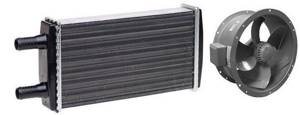
Heat exchanger and fan for water heater
Assembly:
- At the first stage, markings are made. Using a jigsaw or grinder, you need to cut out a strip of metal and use it to build an impromptu frame.
- Then you need to mark the fold lines on the strip.
- The opposite ends of the strip are connected with bolts; to do this, a flange of 1-2 cm must be made at both ends of the strip.
- The remaining material is used to make the front panel, in which many large holes need to be drilled to allow hot air to escape.
- The panel is then attached to the front of the frame.
- The copper pipe must be filled with clean sand, then one end must be plugged and the heat exchanger must be bent.
- At the next stage, the heat exchanger must be cleaned of sand and blown well.
- Two holes are drilled on the side of the body.
- At the ends of the heat exchanger, threads are cut for connection to the couplings.
- A Mayevsky tap is soldered into the upper point of the heat exchanger.
- A heat exchanger is inserted into the finished housing and secured to it with nuts.
- The next step is to install the fan.
- Next, the device is mounted on the wall so that the distance between the wall and the heater is 10 cm or more.
- At the final stage, taps are connected to the central heating pipes and connected to the fan through couplings.
The water heater is ready!
A gas or diesel heat gun can also be used to heat industrial premises.
